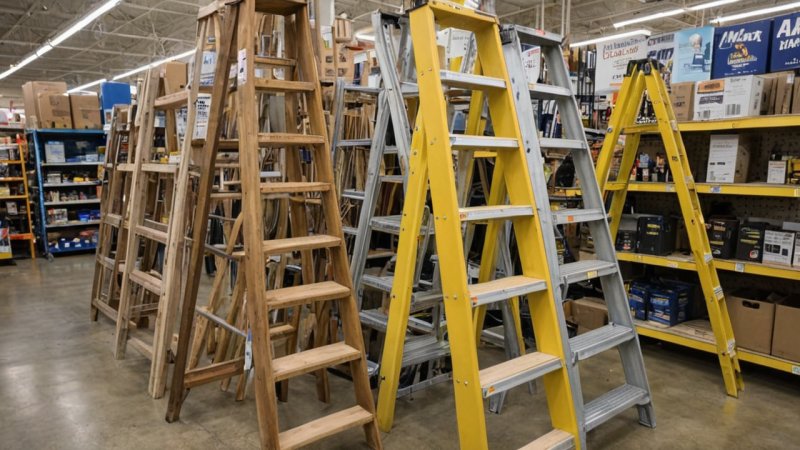Introduction
Choosing the right ladder for your home projects is crucial for safety and efficiency. Whether you're painting, cleaning gutters, or doing repairs, a suitable ladder can make all the difference. In this article, you will learn how to select the appropriate ladder based on your specific needs, the different types available, and essential safety tips to keep in mind.
Step 1: Determine Your Needs
Before you purchase a ladder, it's important to assess your specific needs. Consider the following:
- Height: How high do you need to reach?
- Type of Work: Will you be using it indoors or outdoors?
- Frequency of Use: Is this for a one-time project or regular use?
- Weight Capacity: What is the maximum weight you'll be carrying?
Step 2: Understand Ladder Types
There are several types of ladders, each designed for different tasks:
- Step Ladders: Ideal for light indoor work, such as painting or reaching high shelves.
- Extension Ladders: Suitable for outdoor projects that require reaching higher places, like rooftops.
- Multi-Position Ladders: Versatile ladders that can be used in various configurations for different tasks.
- Articulating Ladders: Great for uneven surfaces and can be adjusted to different heights and angles.
Step 3: Consider Material
Ladders are typically made from one of three materials: aluminum, fiberglass, or wood. Each material has its advantages:
- Aluminum: Lightweight and portable, but can conduct electricity, so avoid using near power lines.
- Fiberglass: Non-conductive and very durable, making it ideal for electrical work.
- Wood: Heavier and often less durable, but can provide a stable option for occasional use.
Step 4: Check the Ladder Rating
Ladders come with a duty rating that indicates the maximum load they can safely handle. Common ratings include:
- Type IAA: Extra heavy-duty (375 lbs)
- Type I: Heavy-duty (300 lbs)
- Type II: Medium-duty (225 lbs)
- Type III: Light-duty (200 lbs)
Choose a ladder with a rating that exceeds your expected load to ensure safety.
Step 5: Safety Features
When selecting a ladder, look for additional safety features:
- Slip-Resistant Feet: These provide better stability on various surfaces.
- Locking Mechanisms: Ensure the ladder can be securely locked in place when extended.
- Stabilizers: These can prevent the ladder from tipping over while in use.
Step 6: Test Before You Buy
If possible, visit a store to physically test the ladder. Here’s what to do:
- Check Stability: Make sure it feels stable when you climb.
- Inspect Joints and Hinges: Ensure they operate smoothly and securely.
- Assess Weight: Ensure you can comfortably move and lift the ladder.
Step 7: Read Reviews and Recommendations
Before making your final decision, read customer reviews and seek recommendations from friends or family. Look for feedback on performance, durability, and safety.
Step 8: Purchase and Use Safely
Once you’ve selected the right ladder, remember to follow safety tips:
- Set Up on Stable Ground: Ensure the surface is flat and solid.
- Maintain Three Points of Contact: Always keep two hands and one foot, or two feet and one hand on the ladder.
- Don’t Overreach: Move the ladder instead of leaning too far.
Summary
Choosing the right ladder involves assessing your needs, understanding ladder types, considering materials, checking ratings, and ensuring safety features are in place. Remember to test the ladder before purchasing and read reviews for informed decisions. Always prioritize safety during use to enhance your home projects effectively.






